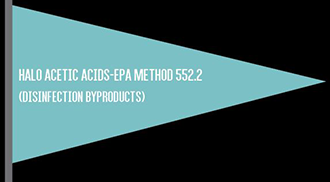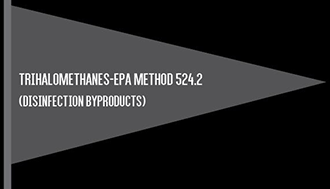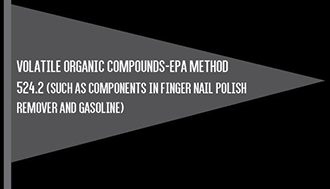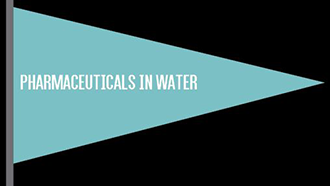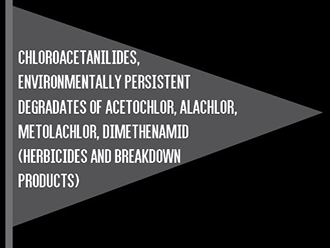

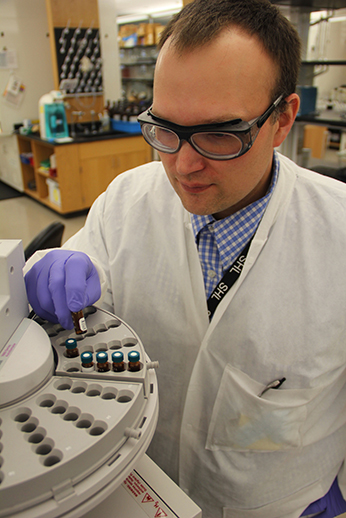
Top Tests
The Hygienic Laboratory was the first state environmental and public health laboratory to achieve approval status to test for all 28 chemicals identified in the EPA Unregulated Contaminants Monitoring Rule 3 (UCMR3).
Human activities often have a significant impact on the environment. Contaminants that infiltrate our natural resources can be detrimental to the health of both humans and animals. The Organic Chemistry sections analyze air, soil, water, vegetation and food to identify and measure potentially toxic organic compounds, such as plasticizers, pesticides, personal care products, pharmaceuticals and industrial chemicals.
Testing is conducted for state agencies, public water supplies, county public health departments, businesses and private citizens. Routine environmental monitoring is conducted to evaluate the ongoing health of Iowa’s environment, while responsive testing is conducted to determine the risk of human and animal exposure in the event of environmental catastrophes.
Analysis for organic compounds is conducted using highly specialized methods and instrumentation in order to detect very low levels of organic compounds. New testing methods are implemented as new threats emerge, such as the possible presence of hormones and steroids in drinking water.
Organic Chemistry sections of the lab include Gas Chromatography Analysis and Liquid Chromatography Analysis, so named for the technology used in the analyses of various samples to determine organic contaminants. A gas chromatograph is used to analyze relatively low molecular weight organic compounds that can be vaporized by heating, while a liquid chromatograph can detect extremely low levels of compounds that have a higher molecular weight and are not as easily vaporized.
- Through a grant from the US Food and Drug Administration the Coralville and Ankeny laboratories continued development and implementation of a processed food testing program in coordination with the Iowa Department of Inspections and Appeals. Ultimately the Coralville laboratory intends to attain ISO 17025 accreditation for processed food testing.
- As part of the Groundwater Monitoring Program, the LC Section has been working on the determination of Triazine Pesticides and their degradates in water in support of research being done in Iowa to detect low levels of the herbicide Atrazine and its breakdown products. Atrazine is an herbicide that is used extensively on corn crops in Iowa and is frequently detected in ground and surface water. This project utilizes EPA Method 536 which uses Liquid Chromatography Electrospray Ionization Tandem Mass Spectrometry (LC/ESI-MS/MS), a state of the art and relatively high-cost technology.
- Many months of collaboration between environmental laboratory, information technology and a commercial firm culminated in implementation of customized instrument interfacing software to electronically input and automatically evaluate data exported from analytical instrumentation to the laboratory’s information management system.
- As part of the three-year monitoring cycle, the Gas Chromatography section continued to provide testing for public water supplies for chemicals listed by the US EPA Unregulated Contaminants Monitoring Rule 3 (UCMR3). The Hygienic Laboratory was the first state environmental and public health laboratory to achieve approval status to test for all 28 chemicals identified in the EPA Rule.
- Mentored a high school student, Lily Fuger from Central Lee High School in Donnellson, Iowa, for determining leaching of bisphenol A from coated metal food containers.

“Uncontrolled Combustion of Shredded Tires in a Landfill - Part 2: Population Exposure, Public Health Response, and an Air Quality Index for Urban Fires,” Journal of Atmospheric Environment 104, 273-283 (March 2015).
“Determination of Routinely Monitored Herbicides in Drinking Water Samples Using Automated Solid Phase Extraction Prior to Liquid Chromatography/Tandem Mass Spectrometry,” International Environmental Technology, 25(1), 3-4 (January/February 2015).
“Using PHEP Funded Resources to Meet Local Needs,” Association of Public Health Laboratories (APHL) Lab Matters, Winter 2015, 18
“Extending PHL Chemistry Lab Capability to Meet Local Needs,” Association of Public Health Laboratories (APHL) Lab Matters, Winter 2015




